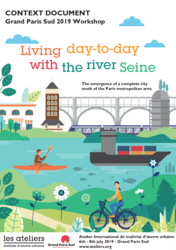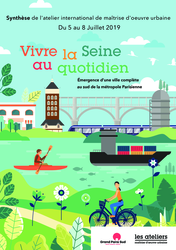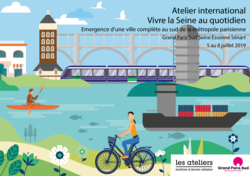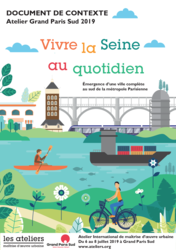Living Day-to-day with the River Seine. The Emergence of a Complete City south of the Paris Metropolitan Area
For many years, rivers did not play a central role in urban development: indeed, they were limited to a productive or industrial function. Today, calls for projects involving rivers are multiplying across the world, reflecting a change of perception of the relationship between town and river.
At a time when environmental challenges are very much in the news, result-ing in commitments and objectives, riverside cities with their river-related ac-tivities can undeniably make major contributions to shaping the urban eco-system.
In addition, rivers can help meet the current need to assert the distinctive
identities of metropolitan areas in relation to each other. A river is much more than a mere urban façade: it is a vector for enhancing a territory’s at-tractiveness and quality of life, while reinforcing its social bonds.
Numerous planning stakeholders have clearly identified the planning poten-tial of rivers, and yet the synergy creation between urbanized and riverside areas is still far from realizing its full potential. The heritage value of a city-river interface is still often unrecognized, so there is an urgent need to re-think this interface with a view to providing the inhabitants with new uses, allowing
them to regain access to the riverbanks, facilitating river crossings and de-veloping economic activities.
Given that some programs may give rise to conflicting uses, the question is how to reconcile economic and ecological interests?
Another key issue facing the development of river towns and cities is manag-ing flood risk.
staff
Delphine Baldé, Architect- Urbanist
Benoît Vernière, Engineer - Urbanist








